Australian consumer tech company Laser has a new range of portable power stations, and we got to test the biggest one, PV1500 for a few weeks.
Unboxing
This doesn’t take long as there are only 3 things inside: The PV1500 unit, the Manual and a power cord for recharging the PV1500 from a 240V socket.
Specifications and Ports
Although called the PV1500, the actual battery capacity is actually 1228Wh. To put this into perspective, a typical home fridge will use between 100 and 400 Watts, so at peak (when the fridge is actively cooling), this will run your fridge for around 3 hours. However, it won’t be running at peak load continuously; more on this later.
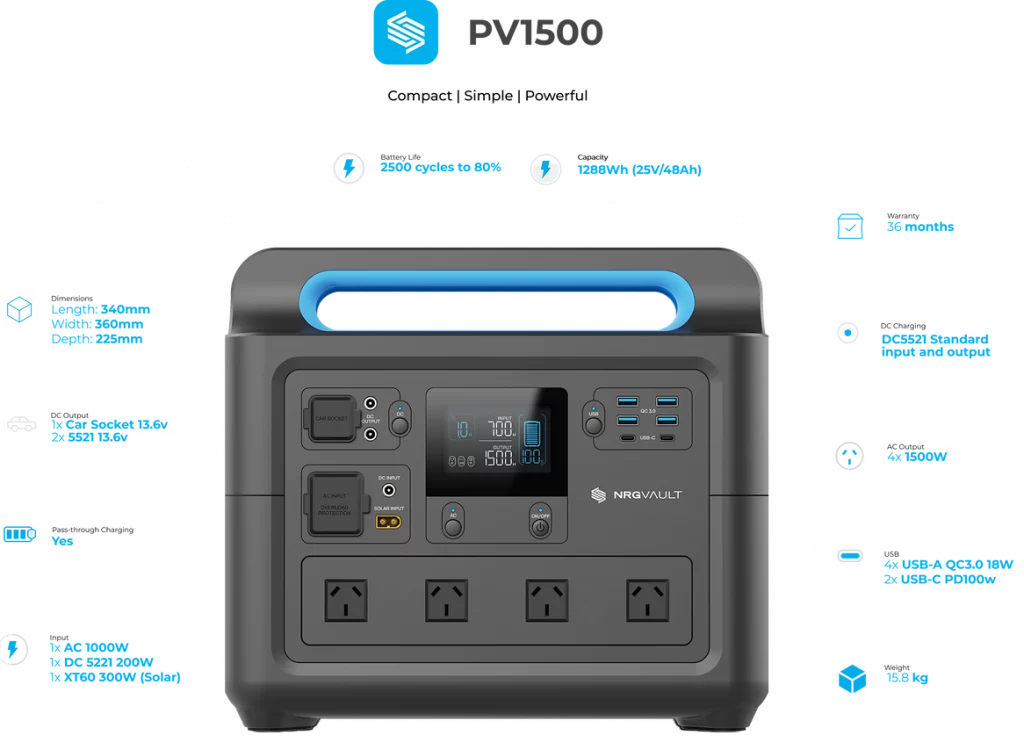
Shown below is a size comparison with the Ecoflow River 2, which weighs 3.6kg. NRGVAULT PV1500 has 4.8 times the battery capacity and weighs a hefty 15.8kg (4.4 times as much). At this weight, the PV1500 is borderline portable as I can carry it from place to place in the house or backyard with one hand, but anyone with arm/shoulder issues could probably not.

Testing Experience
It’s interesting that to use any of the 240V sockets, you have to turn the PV1500 on by pressing On/Off button and then press the AC button to enable output to the 240V sockets.
There isn’t an app to customise the NRGVAULT PV1500 operation, apply firmware updates or see exactly how much power is left beyond the estimate on the front display screen.
My first test was powering my Hisense 55-inch TV. I plugged my TV into the PV1500. During power to AC devices, the NRGVAULT PV1500 makes a low hum which could be distracting in a quiet environment.
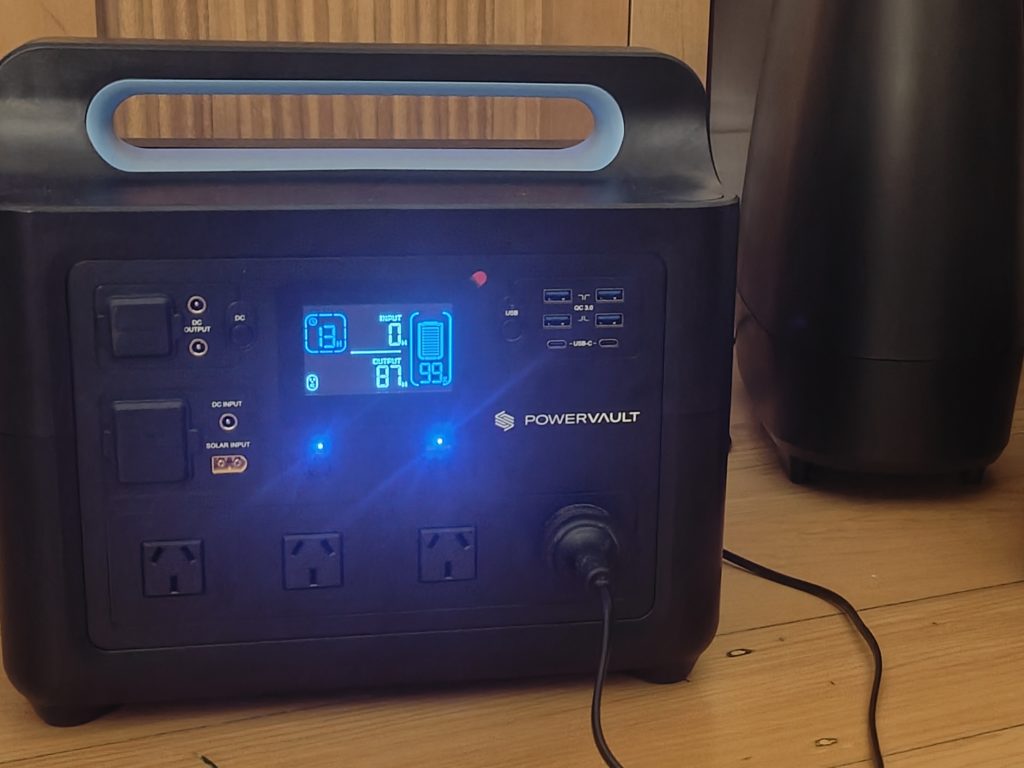
During operation, the AC button glowed bright blue continuously while the On/Off button blinked every now and then. These blue lights are quite bright in a dark room, which is distracting from the TV.
Starting from 100% capacity, the PV1500 estimated it could power my TV for 13 hours if it continued drawing at 87 watts consistently. After 1 hour of watching Star Trek: Picard the battery was down to 92% and showed 12 hours estimated remaining.
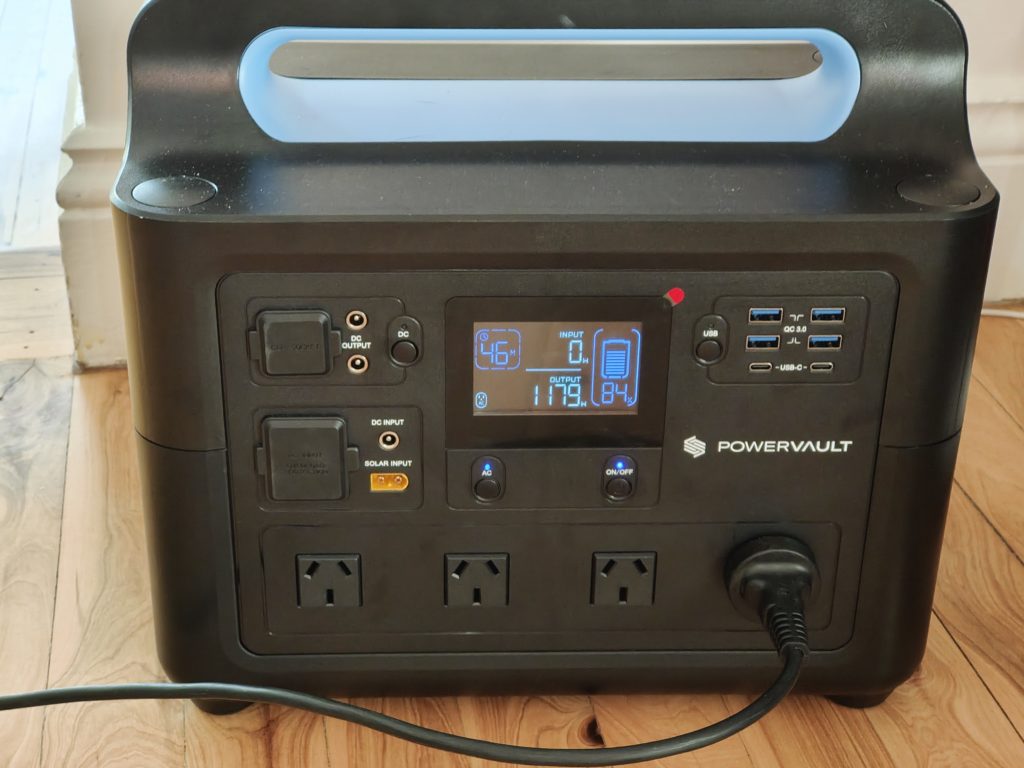
The next test I ran was vacuuming my kitchen. After a few minutes of vacuuming with a power draw of 1179 watts, the battery dropped to 83%.
For a longer test, I used the PV1500 to power my Fridge. The battery started at 81% capacity. After 3 hours, the battery was down to 74% (estimated 21 hours of fridge power remaining). It should be noted that the fridge power usage varied a lot from 5 watts on standby to as high as 109 watts when it was actively cooling.

Lastly, I pan-fried some frozen burger patties with my portable induction cooktop. The PV1500 battery started at 72%. I plugged in my IKEA portable induction cooktop and set the power to 44%. The power draw fluctuated between 544-1204 watts while I was cooking.
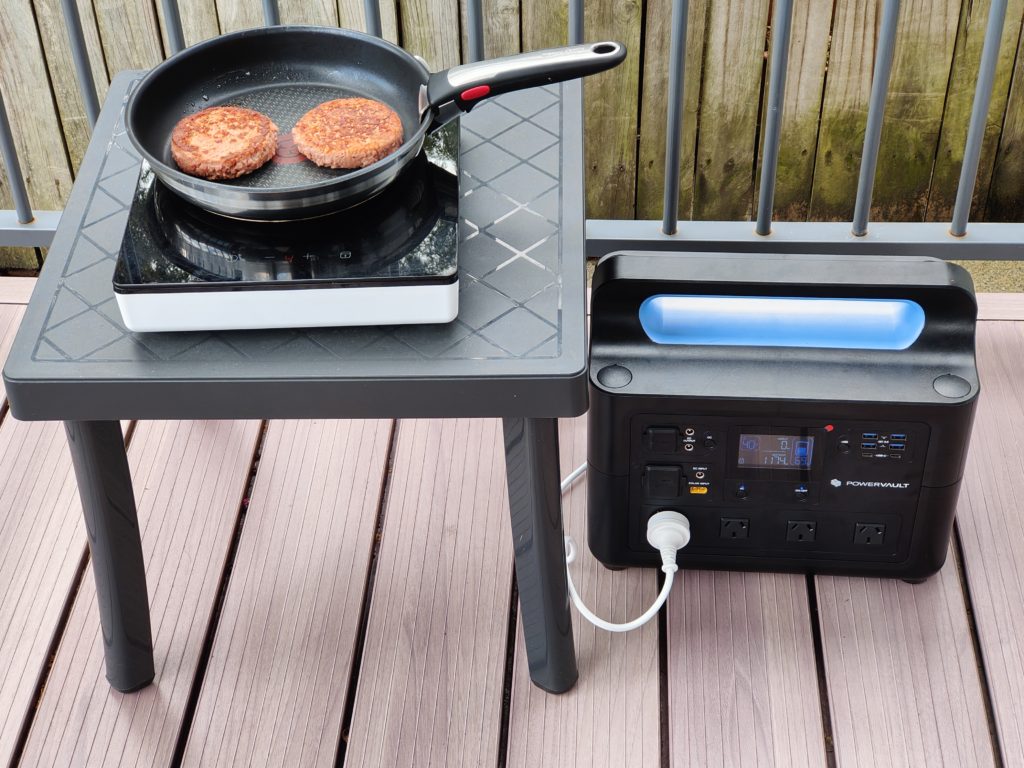
The battery remaining time kept fluctuating as the power draw went up and down from a low of 41 minutes to a high of 1.4 hours. This means you can use the PV1500 for portable cooking, but it will deplete the battery a fair bit if you fry burgers for the whole family.
Is it worth buying the PV1500?
At its core, the PV1500 is a somewhat portable, very large lithium battery with lots of power outlets. This makes it versatile and very useful for many purposes, but it comes at a significant cost of $1,799.95.
To make that purchase price worth it, you have to be certain you will use it often to power your fridge because you get frequent power outages several hours long, to recharge tools in your van on the go if you’re a tradie or powering monthly camping trip equipment like lights, cooktop, speakers etc.
If that’s the case, it’s worth it, especially if you can recharge it back to 100% using your home/business solar power rather than grid electricity.

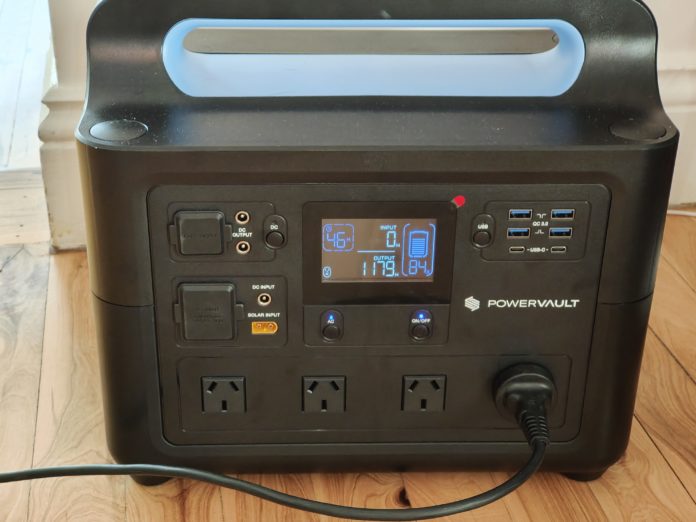










I’d like one of these to power my CPAP (To be able to use humidifier). We lose the power a lot in the Dandenongs. But, price it out of my league.
How many watts does your CPAP use / hour?
The APAP (Air Sense 10) draws 9-15 watts and hour with the humidifier off and heater hose off. Which I use car car battery jumper during power outages. I don’t know what the humidifier/heated hose would use unfortunatley. As most power outages are during winter its those times I really need the Humidifier/heated hose running as well.